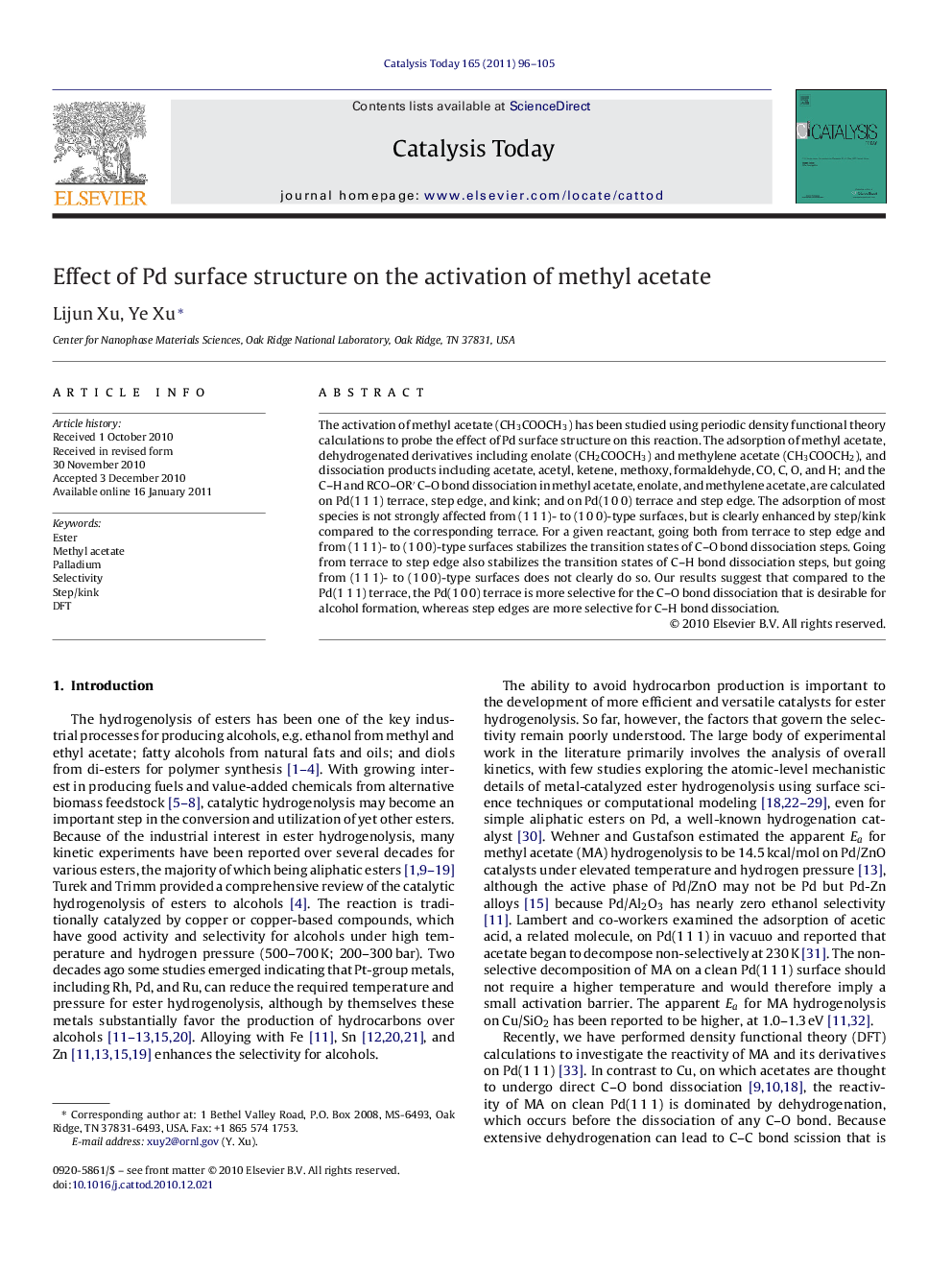| کد مقاله | کد نشریه | سال انتشار | مقاله انگلیسی | نسخه تمام متن |
|---|---|---|---|---|
| 56022 | 47069 | 2011 | 10 صفحه PDF | دانلود رایگان |

The activation of methyl acetate (CH3COOCH3) has been studied using periodic density functional theory calculations to probe the effect of Pd surface structure on this reaction. The adsorption of methyl acetate, dehydrogenated derivatives including enolate (CH2COOCH3) and methylene acetate (CH3COOCH2), and dissociation products including acetate, acetyl, ketene, methoxy, formaldehyde, CO, C, O, and H; and the C–H and RCO–OR′ C–O bond dissociation in methyl acetate, enolate, and methylene acetate, are calculated on Pd(1 1 1) terrace, step edge, and kink; and on Pd(1 0 0) terrace and step edge. The adsorption of most species is not strongly affected from (1 1 1)- to (1 0 0)-type surfaces, but is clearly enhanced by step/kink compared to the corresponding terrace. For a given reactant, going both from terrace to step edge and from (1 1 1)- to (1 0 0)-type surfaces stabilizes the transition states of C–O bond dissociation steps. Going from terrace to step edge also stabilizes the transition states of C–H bond dissociation steps, but going from (1 1 1)- to (1 0 0)-type surfaces does not clearly do so. Our results suggest that compared to the Pd(1 1 1) terrace, the Pd(1 0 0) terrace is more selective for the C–O bond dissociation that is desirable for alcohol formation, whereas step edges are more selective for C–H bond dissociation.
Journal: Catalysis Today - Volume 165, Issue 1, 16 May 2011, Pages 96–105